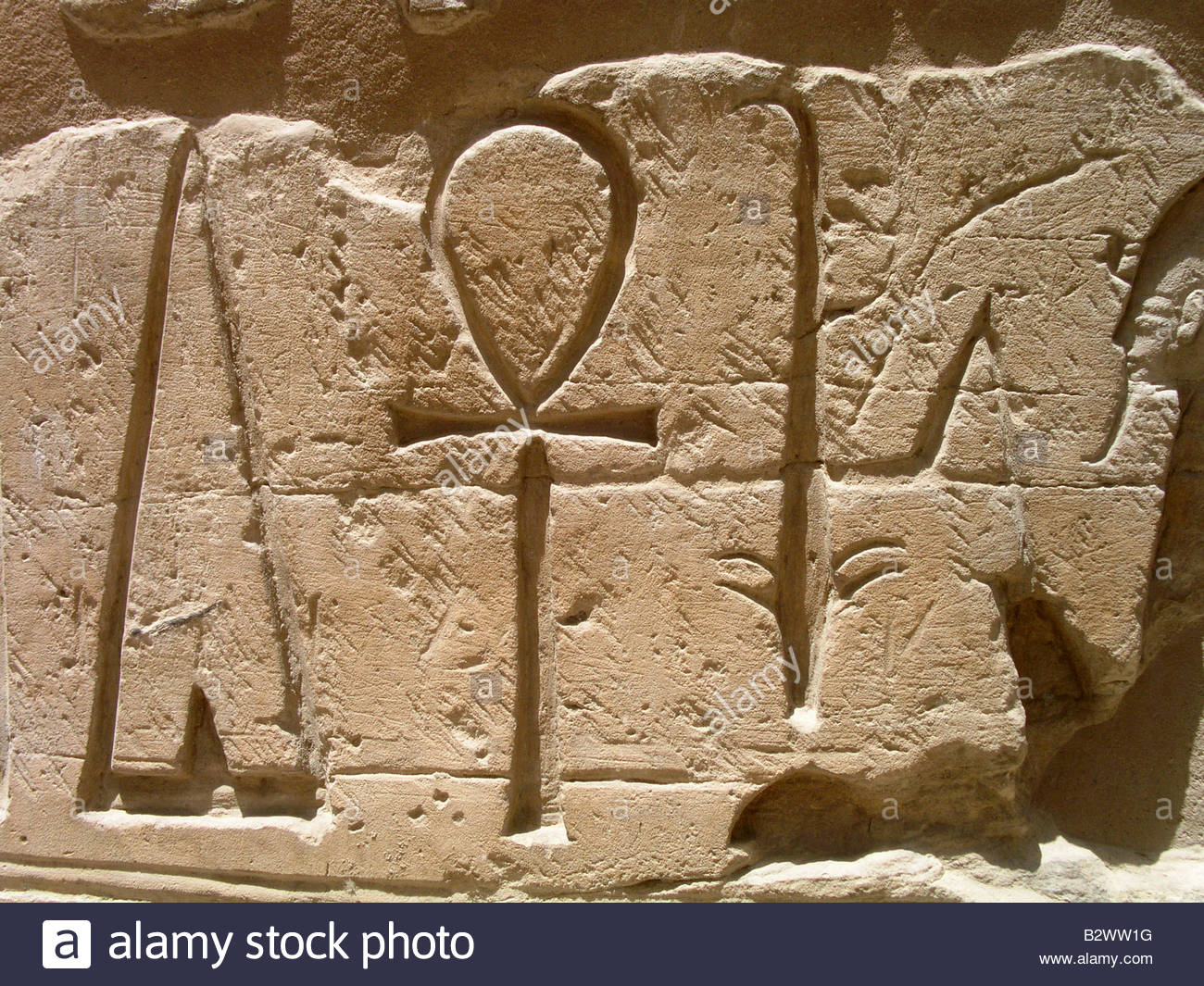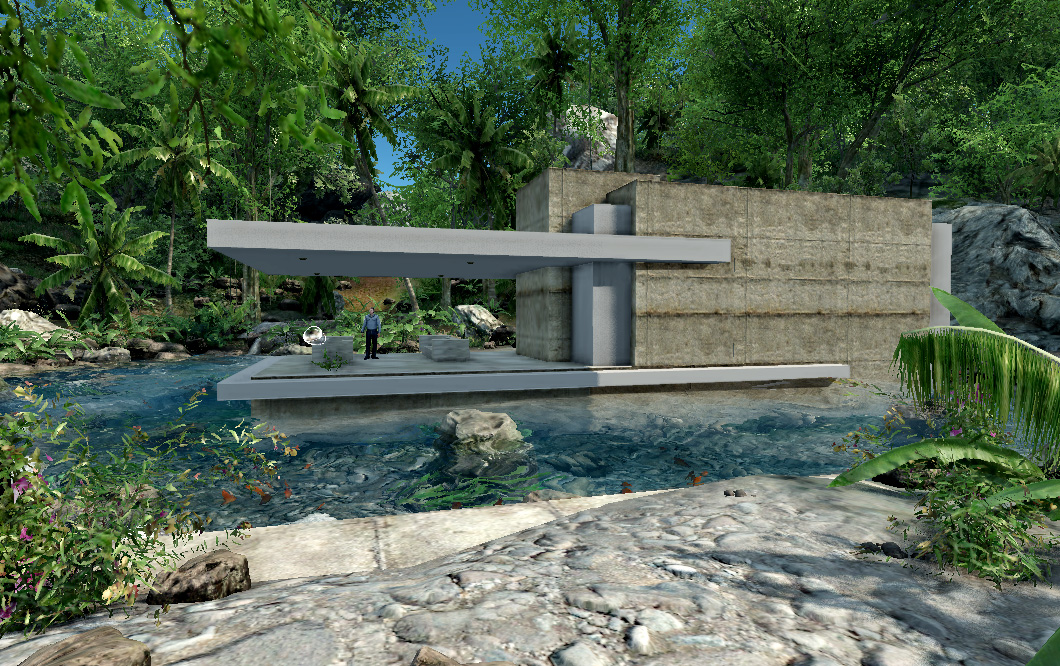Lets take a walk into ancient Egypt to look at the Ankh. While there are many interpretations of the Ankh, typically centered around what it means, a sexual union between a man and woman, a shoe strap, a symbol of life, perhaps a sign of power, whatever it is, it remains a form we all easily recognize today. The following is my interpretation of what it is, why it is the shape it is, and what it means.
- The Ankh: A symbol (representation) of the Nile and Sky (heavens) in negative (the void spaces around the object), and its arms the land on either side, the vertical portion of the ankh the boat below the pharaoh (probable), the upside down ‘tear drop shape’ above the horizon the daily cycle/path of the sun and stars, all set in a rough interpretation of a one point perspective which encompasses a 270° area of view. The Ankh, and the Pyramid are linked in how they were created, viewed and understood.–NBuccalo 26 Apr. 2016 (UTC)

The only way to interpret what the Ankh may represent is to examine the earliest examples, as those examples would reflect the original intent more than later ‘water-downed’ interpretations. This has proven a difficult task to search out examples and date them than expected. Never the less, upon further consideration, I believe the negative spaces around the Ankh may be as important as the solids, that below the horizon lies the water of the Nile, and above, the sky. The ‘arms’ the land, the ‘upside-down tear drop’ the path of the sun (stars), the vertical bar, a boat. The entire ‘scene’ viewed from the perspective of a Pharaoh sailing down the river Nile, centered and in perfect harmony with the nature that surrounds him. The negative ‘voids’ being that which is not physically solid-the water reflecting the sky above, the ‘rectilinear’ elements being physically solid, the ‘path’ being arc’d and thus curvilinear.
It is because this symbol, reflecting the entire world known to human kind at the time, makes it truly important for the Egyptian culture, assuming one can tie this theory to the specific details of early representations. The key to accepting an interpretation is the upside down tear drop, that it is a very specific shape that would not be considered by anyone to be common. It therefore can be considered deliberate. The side bars, or land forms, as I have hypothesized, do not have to reflect a ‘perfect perspective’ as modern humans understand perspective, but instead can understandably reflect the understanding of ‘ ‘what one sees when looking down a river to the horizon versus what one sees on the left and rights sides of one’s position (assuming in a boat centered in a river), that ‘looking down the river’ would converge on a point, while the ‘on the sides’ would appear horizontal and parallel to the observer.’ ‘ These arms therefore could be ‘drawn’ as horizontal lines that, near the intersection, converge to a point. While other representations of the ankh show the ‘arms’ as converging from their tips to the center, reinforcing a ‘one point perspective’ notion. Of course if this is indeed a ‘one point perspective’ then the ankh would be a ‘view’ of some sort.

Image from SymolicLiving.com
My interest with the Ankh, beyond just the simple understanding of human development and truth, stems from its connection to the stepped pyramid, in that Djoser’s pyramid is a one point perspective from the base of the edifice to its pinnacle, represents a path, and more directly a symbol of the Nile, with its undulating waves (I refer to as the wave pyramid), for a journey, in a boat strategically located at its base, to the sky above. Both this pyramid and the ankh, based on the notion that humans are constantly trying to understand the world around them, and the ankh representing a person who is on a boat, looking around themselves to see the world, and thus understanding that they are 1) alive, and 2) in this place on earth at this time, and 3) that they do indeed exist and have a relationship with all that they can see. That to understand ‘their perspective of the world around them’ we need not look any further back to our own history as those of the Renaissance and their efforts to understand perspective, and how it was employed in Pietro della Francesca, Raphael, or Di Vinci’s Last Supper (especially their studies of the human eye and the ‘rays of sight lines from the eye’), in that while the notion of perspective before the Renaissance may have disappeared from memory, or even being defined as ‘perspective’, that during the Renaissance it was studied, understood and employed in a celebratory manner. The Renaissance perspective being something that ‘humans discovered’ in their search for truth, and thus put humans in a relationship to the world around them. Thus, there is little difference in purpose between the Egyptians and those of the Renaissance, both reflecting our human desire to understand the world around us. —NBuccalo 26 Apr. 2016 (UTC)
But, then again, I may be wrong.
Taken from my work at Wikiversity on Imhotep’s Djoser Pyramid and Complex study: https://en.wikiversity.org/wiki/Development_of_hieroglyphic_writing
PS:
I must admit that the vertical part often reminds me of an obelisk, or perhaps a staff. As noted above, I imagine a boat with a large bow perhaps, or maybe it is the sun’s reflection in the water (doubtful as it is ‘solid’). Maybe it just represents the path to the horizon, the direction to go, into eternity and infinity, forever through time.
Without dated historical examples it is very hard to acknowledge credible relationships between the Ankh and our world. Certainly parts of the Ankh resemble other hieroglyphs including the horizontal resembling a knot, in some examples. What is interesting to note, is that many, perhaps all hieroglyphs are based as a representation of the real world as in this example.
From scm.ulster.ac.uk
A problem with trying to deduce the origins of an artifact is two fold: the artifact’s shape can change over time, and the meaning also can evolve over time. Perhaps one time this was something a priest carried, like an incense container, to denote their power and status, and ‘offering’ to the gods (to ‘bless’ the path they walked). While this might be an original meaning, or even the meaning I describe above, doesn’t imply that it didn’t change over time. Certainly the variety of modern interpretations shows that meaning can change over time, in that a theory becomes popular and is then considered to be fact.
So why go to the trouble of trying to understand the Ankh then? If the meaning and its components can change over time, its like trying to throw a dart at a dart board that is flying all around a room. Well because it can potentially give us clues into how humans think and help expose the truth behind how people interpret the world. This in itself can be exceptionally useful to designers, historians and others as it helps us reveal how people view the world no matter where on earth they are located.
For a architect like myself, or like Imhotep, the core of design is its reflection of how humans perceive the world and universe, and this is expressed in the form of a final design. This is true of the Renaissance, and all other periods of architecture throughout history. What’s interesting about ancient architectural history is that almost all humans were reaching up to the celestial sphere above. Now that should tell you something.



A problem with trying to deduce the origins of an artifact is two fold: the artifact’s shape can change over time, and the meaning also can evolve over time. Perhaps one time this was something a priest carried, like an incense container, to denote their power and status, and ‘offering’ to the gods (to ‘bless’ the path they walked). While this might be an original meaning, or even the meaning I describe above, doesn’t imply that it didn’t change over time. Certainly the variety of modern interpretations shows that meaning can change over time, in that a theory becomes popular and is then considered to be fact.
So why go to the trouble of trying to understand the Ankh then? If the meaning and its components can change over time, its like trying to throw a dart at a dart board that is flying all around a room. Well because it can potentially give us clues into how humans think and help expose the truth behind how people interpret the world. This in itself can be exceptionally useful to designers, historians and others as it helps us reveal how people view the world no matter where on earth they are located.
For a architect like myself, or like Imhotep, the core of design is its reflection of how humans perceive the world and universe, and this is expressed in the form of a final design. This is true of the Renaissance, and all other periods of architecture throughout history. What’s interesting about ancient architectural history is that almost all humans were reaching up to the celestial sphere above. Now that should tell you something.